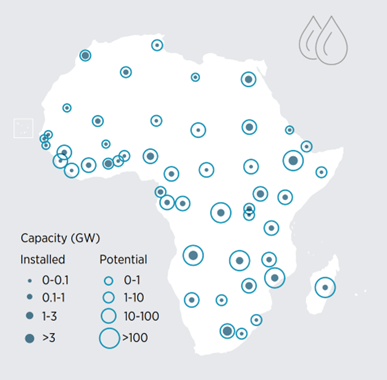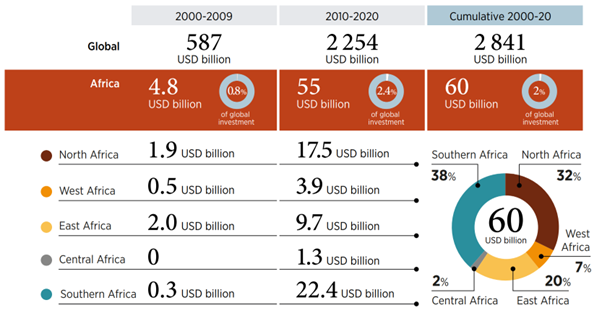It has been argued by some in international climate negotiations that developed countries have an emission debt to pay off compared to developing countries, as they already emitted a significant amount of greenhouse gas (GHG) emissions to drive their development in the past, especially during the period of industrialization. For the less developed countries, they have little historical responsibility and little capacity to commit to reduce emissions. Even though this argument is not explicit in official documents, the responsibilities of countries in combating climate change are still defined as ‘common but differentiated’ in the United Nations Framework Convention on Climate Change (UNFCCC). One of the assumptions supporting this arrangement is that development needs fuels, and that emission is a price to pay for development. The need for growth in developing countries provides a justification for their future emissions. However, this rationale is going to change with the ‘net zero initiative’ implemented worldwide.
In the energy sector, a transition has been underway for more than a decade from traditional energy such as coal and oil to low-emission renewable energy sources such as hydropower, wind power, photovoltaics(PV), etc. Compared to countries where the infrastructure for traditional energy sources is already in place and functioning, many African countries have an advantage in the energy transition as they do not have to bear the costs of large-scale infrastructure replacement. The increasing global concerns about environmental issues and Africa’s vulnerability to climate change have also created the possibility for Africa to leapfrog into renewable energy.
Energy is a critical component of economic development. Access to energy is essential not only for the delivery of health services and education, but also for business, economic opportunities, and employment. However, according to the African Development Bank, there are over 640 million people in Africa living without access to energy. Africa’s current energy mix is mainly based on non-renewables. With population growth and expanded commercial and agricultural activities, African countries need a more powerful motor to support their development, one that is in line with sustainable development trends and has the potential to be technically and financially supported by the donor countries, as well as supported by their neighbors.
Favorable geographical conditions and abundant natural resources
Africa is a continent with well-known heterogeneous cultural, social, economic and political arrangements. It is also a continent with great geographic diversity which holds huge potential for the development of hydro, wind, solar, and geothermal energy. Take solar energy as an example. According to the International Renewable Energy Agency(IRENA), on average the continent receives annual solar irradiation of 2 119 kWh/m2 and it is estimated that its technical potential for solar power stands at 7 900 GW: Africa possesses 60% of the world’s best solar resources, but only 1% of installed solar PV capacity. Similarly, as estimated by Delft University of Technology in 2014, the continent’s unexploited hydropower potential can reach 1 753 GW, which is almost 7 times the installed capacity of hydropower in Europe in 2021. In some African countries, the favorable conditions for hydropower have already brought the share of electricity generated by hydropower to more than 80% of total power generated. Figure 1 and figure 2 present the distribution of these resources.
Figure 1. Average annual global horizontal irradiation in Africa

Source: Renewable energy market analysis: Africa and its regions, IRENA
Figure 2. Hydropower potential and installed capacity in Africa

Source: Renewable energy market analysis: Africa and its regions, IRENA
Moreover, Africa is also a land with rich natural resources that can meet the growing demand of clean energy. Africa has the world’s greatest mineral industry. As the world’s major producer and exporter of mineral commodities, Africa is home to 30 percent of the world’s mineral reserves, including lithium, manganese and cobalt, which are critical for batteries, and copper, which is an essential component for the electricity network and almost all electronic devices. Africa also holds significant potential for rare earth elements, especially in South Africa, Tanzania, Malawi and Mozambique. These elements are frequently used in renewable technologies including solar cells and wind turbines. These reserves spare Africa from the challenge predicted by Fatih Birol, executive director of the International Energy Agency(IEA), of a mismatch between the world’s enhanced climate ambitions and the availability of key minerals.
Aspirations for economic and sustainable development
On top of their inherent geographical advantages and abundant natural resources, the deployment of renewable energy in Africa is also driven by governments’ commitment to economic and sustainable growth.
The past decade has witnessed a rapid decline of the cost of renewable energy, and a robust increase of its competitiveness. Between 2010 and 2021, the global weighted average levelized cost of electricity (LCOE) of utility-scale solar PV projects has declined by 88%, and in 2021, the LCOE for new utility-scale solar PV and hydropower was 11% lower than new fossil fuel power generation projects. Renewable energy constitutes an economically appealing option.
While satisfying local electricity demand in a more sustainable manner, renewables also have the potential to boost employment and economic growth. In Africa, renewables can play a central role in job creation as investment in energy transition technologies creates nearly three times as many jobs as fossil fuels do. IRENA’s report indicates that job created in the transition will outweigh the loss by steering away from fossil fuels and nuclear power.
Despite these advantages, obstacles may still come from countries relying on fossil fuels exportation, however, the global trend towards low-carbon economy and the measures to restrict emissions adopted by major consumer countries and regions, such as emission tax and carbon border, will force changes of energy used in the entire value chain. These countries may face an increased risk of stranded assets. Therefore, there is a need for African countries to diversify their economy to proactively adapt to this trend and avoid being forced into a more passive position. Economic diversification in Africa is a much bigger topic, while green industries, including renewable energies could be at the heart of the economic transformation. It is estimated that if coupled with an appropriate policy basket, a structural shift from fossil fuels to renewable energy-based system in Africa could increase GDP by 6.4%, employment by 3.5%, and welfare index by 25.4% by 2050.
Need for adequate and affordable finance
There is mounting evidence that renewable energy can serve as an affordable alternative to fossil fuels and catalyze the development of African economies. However, while energy is becoming cheaper, capital remains expensive in Africa. Obtaining adequate and affordable financing is a great barrier to the development of renewables in Africa.
Despite the great promise of the energy transition, Africa has received only 2% of the USD 2.8 trillion global renewable energy investment over the past two decades. According to IRENA, Africa needs an annual investment of around USD 70 billion in renewable energy projects until 2030 to achieve the energy transition.
Table 1. Overall renewable energy investment in Africa and globally, 2000-2020
USD Billions, current 2020

Source: Renewable energy market analysis: Africa and its regions, IRENA
One of the reasons is that the cost of capital[1] in African countries can be much higher than that in other regions as investment in Africa generally bears a higher risk[2]. Faced with limited and expensive investment, in Africa, the cost of electricity generated by renewable energies may not necessarily be lower than that in regions with less advantageous natural conditions such as Europe. In response, multiple de-risking policies and financing mechanisms have been realized on national, regional, and continental level to boost investment in infrastructure. For example, the African Development Bank is working with leading global development finance institutions to set up a mutualized co-guarantee platform to de-risk investment and facilitate projects under the Africa Investment Forum (AIF).
Join our efforts
As an NGO, TPSF has leveraged its expertise and resources in the field of public works to deliver infrastructure projects in African countries. Thanks to our local partners, we have been able to identify specific local needs and to formulate corresponding projects to meet these needs. In Andriatsemboka, Madagascar, as part of our partnership with Association of Engineers for the Development of Renewable Energies (AIDER), we plan to upgrade the existing hydro center and to increase its power from 75kW to 180kW and accompany it with a decentralized solution – Café Lumière, for the population in remote villages who are not connected to the grid. Café Lumière is a small power supply center, which meets the needs of charging in the neighborhood through installed solar panels on the rooftop.
Now nearly 60 million people in Africa have electricity access through off-grid solutions, and the number is increasing year by year. Whether it is through exploiting more renewable energy sources such as solar and wind farms and connecting them to the grid, or by deploying decentralized solutions such as microgrids, we are eager to see African countries fulfill their energy access targets through the deployment of renewable energy, and we are honored to be part of the efforts.
[1] The required rate of return on existing securities
[2] Political and regulatory changes, expropriation, macroeconomic instability and currency risks, etc.
Xiaosu WANG
